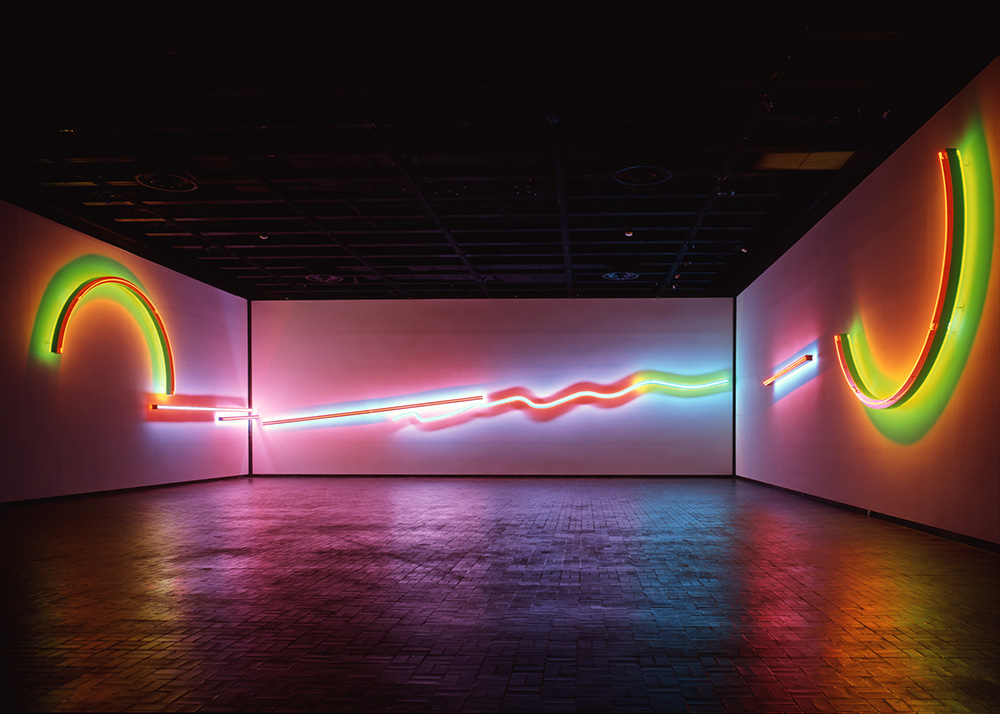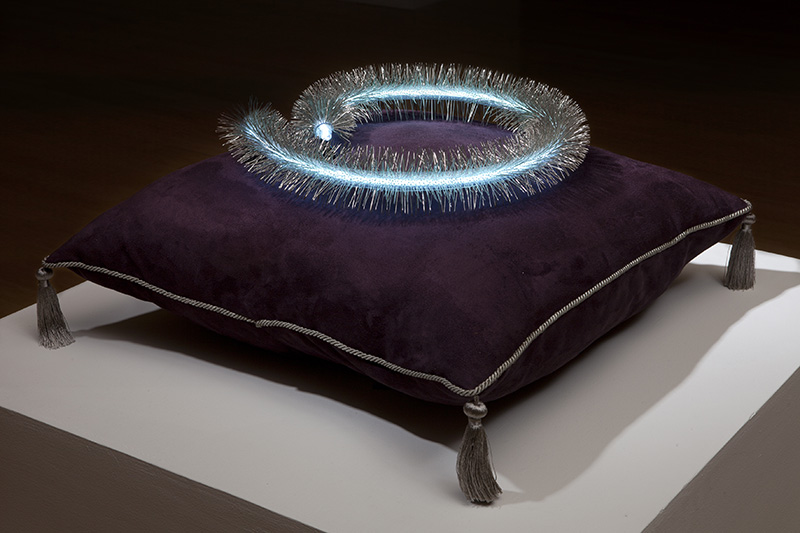ART-PRESENTATION: Stephen Antonakos-Proscenium+Bending Light
 The use of neon in art is definitely not new. Vapor-tube devices filled with gas were invented in the early 1900s and were being shaped and used in advertising by the 1930s. In the decades that followed, the use for neon tubing in art became more apparent, and people continued to experiment with the fragile medium. Neon behaves unlike any other medium and takes physical skill to manipulate. The combination of color and light are also unique to neon, making it a medium of choice for many as a vehicle to convey emotion and ideas.
The use of neon in art is definitely not new. Vapor-tube devices filled with gas were invented in the early 1900s and were being shaped and used in advertising by the 1930s. In the decades that followed, the use for neon tubing in art became more apparent, and people continued to experiment with the fragile medium. Neon behaves unlike any other medium and takes physical skill to manipulate. The combination of color and light are also unique to neon, making it a medium of choice for many as a vehicle to convey emotion and ideas.
By Efi Michalarou
Photo: Neuberger Museum of Art Archive
Two complementary exhibitions are on presentation at Neuberger Museum of Art, “Stephen Antonakos: Proscenium” and “Bending Light: Neon Art 1965 to Now”. Distinguished by the use of vibrant colors, Stephen Antonakos was a pioneer in introducing neon into the realm of art, giving it new perceptual and formal meanings. Around 1960, when it was becoming clear that neon would be his primary medium, Stephen Antonakos called neon a “controlled paradise”. This phrase indicates both the innate rigor of his vision and his readiness to discover new possibilities. His art is based on light, scale, proportions, and the relations between geometric forms and their overall relation to their site. It has nothing to do with neon’s previous uses, only with its new capabilities as purely abstract linear and spatial color. Antonakos turned away from illusions, allusions, representations, metaphor and symbol: he defined his art as “real things in real spaces, here and now”. Stephen Antonakos created “Proscenium” especially for the Neuberger Museum in 2000. Here, the gallery walls appear to be painted with neon. The effect is captivating. Straight rods and curvy arcs of glass tubing filled with neon gas stretch across acres of wall space, each emitting one color while casting an under-glow in a contrasting color. Named for a type of Greek stage, “Proscenium” wraps and brilliantly illuminates the Gallery’s perimeter walls, animating the darkened space with vibrant color, glowing light, and calligraphic line. Featuring works from the Neuberger Museum’s Permanent Collection as well as works on loan from Public and Private Collections, the exhibition “Bending Light: Neon Art 1965 to Now” presents the work of 12 artists who explore the use of neon as well as their close collaboration with skilled glass-benders. On presentation are works by: Stephen Antonakos, Sarah Blood, Chryssa, Agnes Denes, Tracey Emin, Cerith Wyn Evans, Glenn Ligon, Kadir López, Ivan Navarro, Paul Seide, Keith Sonnier and Rudi Stern. Also the exhibition includes works fabricated by the studios: Let There Be Neon, Lite Brite Neon, Spectrum on Broadway. The exhibition focus on the oft-blurred lines between commercial and fine art, and consider the complicated interplay among light, chemistry, and artistic vision. Whether capturing the gesture of a handwritten word, the precise geometry of a drawing, or a sketch drawn on a napkin, the benders helped transform neon from an advertising tool into an art form. Works on view include Chryssa’s “Ampersand V” (1965), Keith Sonnier’s “Chila” (2016), Stephen Antonakos’s “Untitled (For Sally Yard)” (1985), Tracey Emin’s “The Kiss Was Beautiful” (2013), Glenn Ligon’s “Warm Broad Glow” (2005)., Otto Piene’s “Neon Medusa” (1969), and Cerith Wyn Evans’ “TIX3” (1994).
Info: Curators: Helaine Posner (Stephen Antonakos: Proscenium), Avis Larson (Bending Light: Neon Art 1965 to Now), The Neuberger Museum of Art, Purchase College, State University of New York, 735 Anderson Hill Road, Purchase, NY, Duration: 28/1-24/6/18, Days & Hours: Wed-Sun 12:00-17:00, www.neuberger.org


